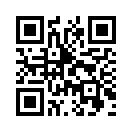Compiling Emacs 29 for Debian/Ubuntu/Mint
I wanted to explore some of the new features in Emacs 29 (in particular Eglot). The version of Emacs that ships with my version of Linux Mint is Emacs 27, so I decided to build Emacs 29 from scratch.
This turned out to be absolutely painless; but installing the new version seamlessly into the existing environment did cause some hang-ups.
